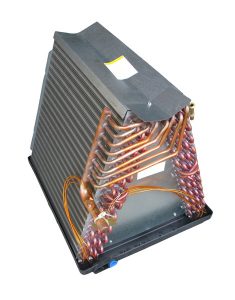 Our job is to know your air conditioner inside and out, so that we can quickly detect problems and do any AC service the right way the first time around. But that’s because our technicians have years of experience, receive ongoing training, and work only on equipment having to do with your home comfort. This is our specialty; we don’t expect it to be yours!
Our job is to know your air conditioner inside and out, so that we can quickly detect problems and do any AC service the right way the first time around. But that’s because our technicians have years of experience, receive ongoing training, and work only on equipment having to do with your home comfort. This is our specialty; we don’t expect it to be yours!
Still, you may be curious about some of the components within your central air conditioning system, and we’re here to help. Today, we detail some of the major components of your air conditioning system. Remember, when you do need air conditioning repair or replacement, reach out to our team.
Refrigerant (Freon)
First, you should know that refrigerant is the term technicians use for something you may have heard called “Freon,” a brand name that doesn’t necessarily describe the type used in your AC. Refrigerant is not a fuel, like natural gas. (Your air conditioner runs on electricity.) It is a chemical blend that moves throughout the system through a sealed refrigerant line that connects the indoor blower unit and coil to the outside condenser unit.
The job of refrigerant is to absorb heat from the air inside of the home and release this heat outdoors. This heat exchange and removal process is actually what makes your air conditioner cool, so the main job of most of the rest of the components is to support this task.
The Compressor
The compressor is located in the outside condenser unit of your air conditioner. As refrigerant moves to the outdoor unit, the compressor adds pressure and heat to the refrigerant. That added pressure helps to keep it pumping and circulating throughout the system. Refrigerant needs to be under a certain amount of pressure in order to release heat as well.
The compressor is one of the most important—and costly—parts of the AC system. When the compressor runs into trouble, it often means the entire system needs replacement.
The Condenser
The condenser coil is the next step on the refrigerant’s journey. The coils have fins that allow for heat to vent out of the refrigerant and away from the unit. The refrigerant itself won’t vacate the system. Rather, the large fan in the outside condenser unit helps to give it a boost and carry that heat into the air.
Evaporator Coils
The indoor coils of the AC system are the evaporator coils. Before it gets to the evaporator coils, refrigerant loses some heat and pressure at the expansion valve, but the evaporator is where the cooling really starts. By the time it reaches these coils, refrigerant is at a low enough temperature and pressure to be able to absorb heat coming in from the air in your home.
Indoor Fan
The evaporator coil cools down immensely as refrigerant within absorbs heat. The fan blows air across this coil bringing cool air to the ductwork and through the vents in your home. The fan also absorbs warm air from the home through a return register in order to provide heat to the refrigerant and to bring in enough air to cool the home. A clogged air filter can prevent this from happening, which is why it’s so important to change the filter once a month.
Contact Johansen & Anderson Inc for quality air conditioning in Shorewood, IL.
